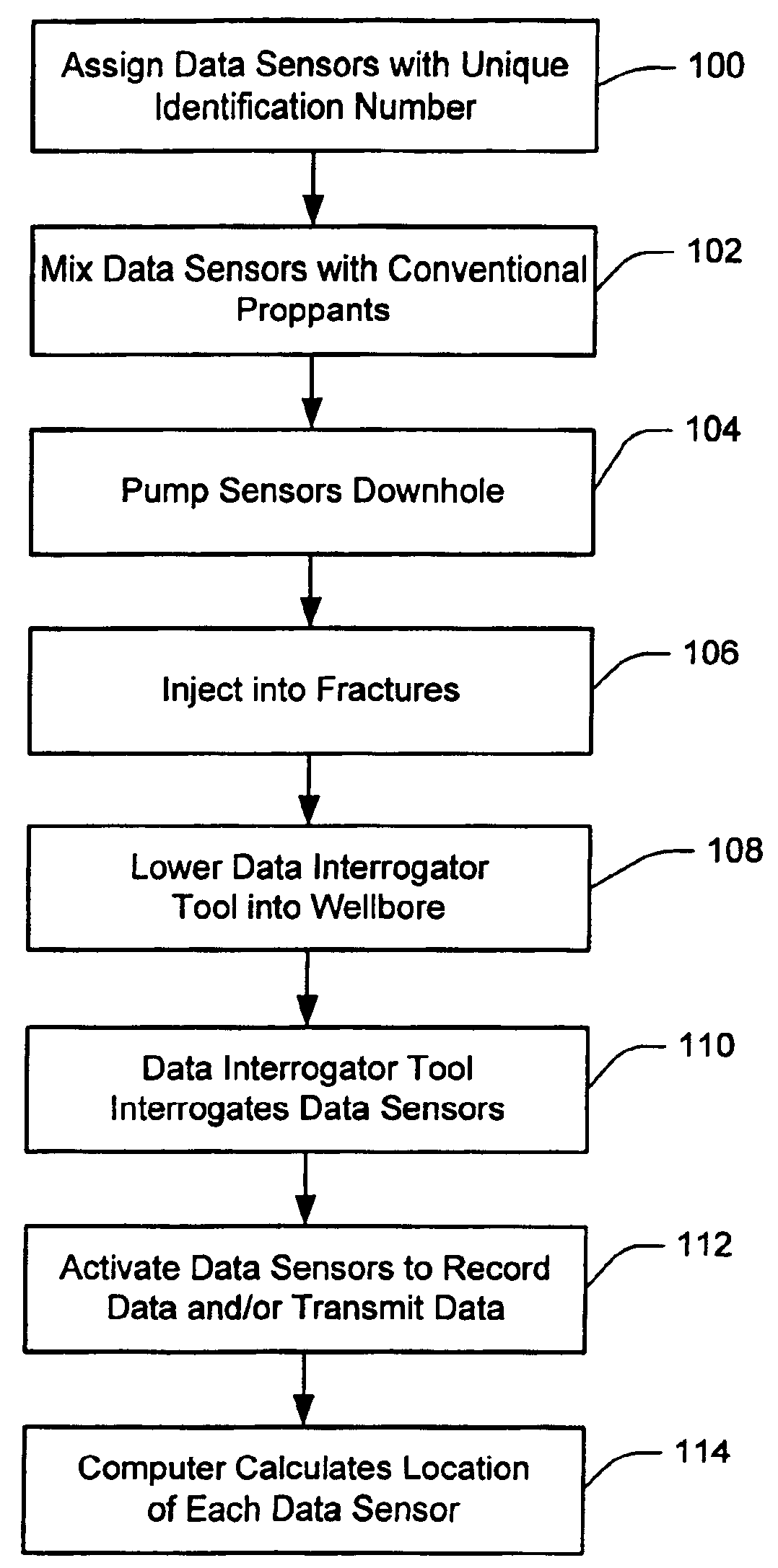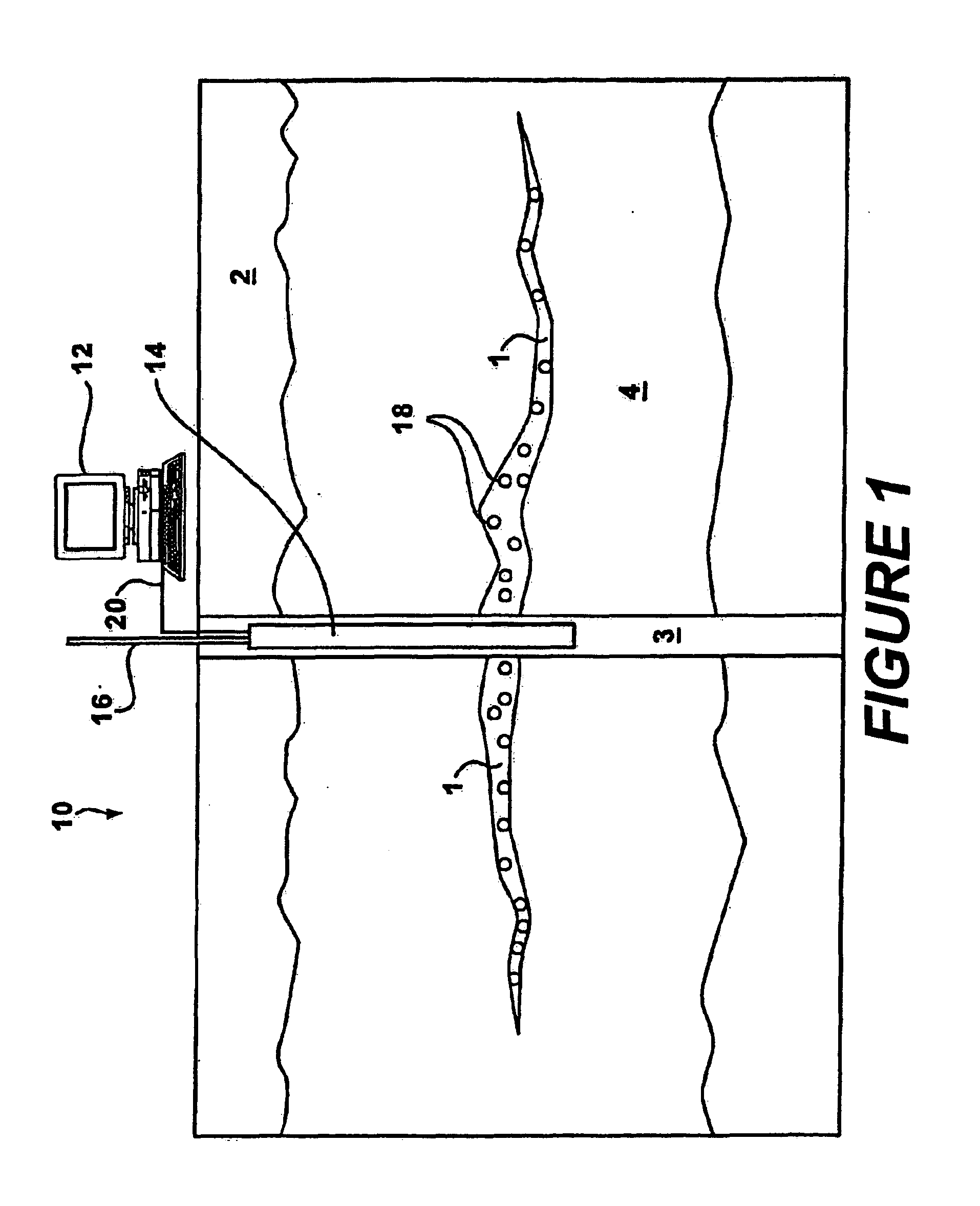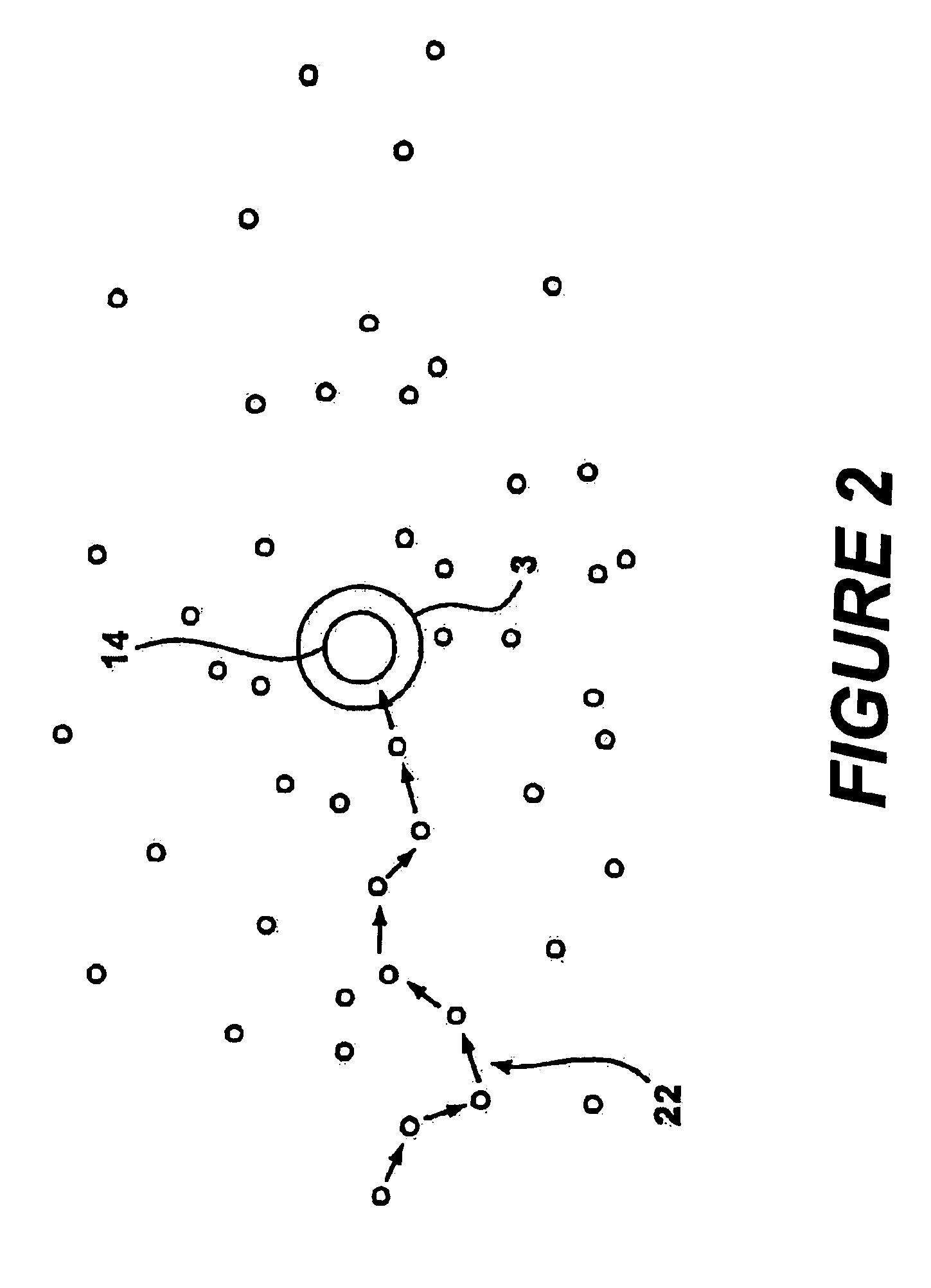Method and system for determining parameters inside a subterranean formation using data sensors and a wireless ad hoc network
a subterranean formation and parameter determination technology, applied in seismology for waterlogging, instruments, borehole/well accessories, etc., can solve the problems of fracture closing, subterranean formation fracture, and inability to maintain a highly conductive passageway
- Summary
- Abstract
- Description
- Claims
- Application Information
AI Technical Summary
Benefits of technology
Problems solved by technology
Method used
Image
Examples
Embodiment Construction
[0020]The details of the present invention will now be discussed with reference to the Figures. Turning to FIG. 1, a data collection and processing system for determining parameters inside fractures 1 of a subterranean formation 2 is illustrated generally by reference numeral 10. The system 10 includes a data processor 12, which may be a personal computer (PC) or other similar data processing device. The system 10 further includes a data interrogator tool 14, which is lowered down hole into a well bore 3 formed within the subterranean formation 2 using a drill or work string 16. The system 10 further comprises a plurality of flowable discrete data sensors 18, which may be mixed with conventional proppants and pumped down hole into the pores or fractures 1 of the subterranean formation 2 in the region believed to contain the desired hydrocarbons, i.e., the productive zone 4.
[0021]The data interrogator tool 16 is connected to the PC via a wire line 20 or other telemetry device such as...
PUM
 Login to View More
Login to View More Abstract
Description
Claims
Application Information
 Login to View More
Login to View More - R&D
- Intellectual Property
- Life Sciences
- Materials
- Tech Scout
- Unparalleled Data Quality
- Higher Quality Content
- 60% Fewer Hallucinations
Browse by: Latest US Patents, China's latest patents, Technical Efficacy Thesaurus, Application Domain, Technology Topic, Popular Technical Reports.
© 2025 PatSnap. All rights reserved.Legal|Privacy policy|Modern Slavery Act Transparency Statement|Sitemap|About US| Contact US: help@patsnap.com



